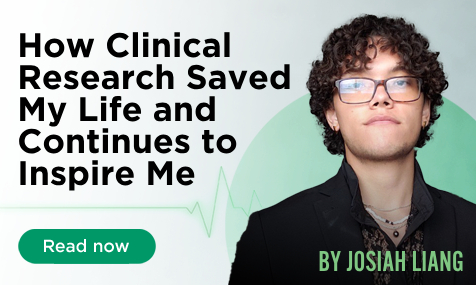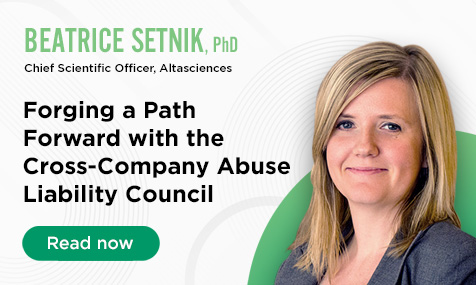What Does it Take? | Biologic and Biosimilar Clinical Trials
It’s the much-anticipated Part II of our “What Does it Take” series (insert glorious trumpet announcement sound here). In Part I, we discussed general First-In-Human (FIH) clinical trials, and today we’re going to go a step further to discuss biologic and biosimilar FIH trials.
Biologic vs. Biosimilar
It’s important, for those who are unfamiliar, to first understand how the FDA views biologics and biosimilars for the purposes of drug development.
Biologics and biosimilars are made from living cells through highly complex manufacturing processes. They are used for a broad spectrum of diseases such as cancer, chronic kidney disease, and autoimmune disorders. A biologic is defined by the FDA as “products such as vaccines, blood and blood components, allergenics, somatic cells ... tissues, and recombinant therapeutic proteins.” The FDA goes on to further define a biosimilar as a “biological product that is approved based on a showing that it is highly similar to an FDA-approved biological product, known as a reference product, and has no clinically meaningful differences in terms of safety and effectiveness from the reference product.”
Another way to think of it is a biologic is like a new drug, whereas a biosimilar is like a generic, except it is similar to the biologic and not necessarily identical (see what we did there?). Since biologics are derived from living cells, most biologics will never be exactly replicated like generics can. Biosimilars are just very close to their original counterparts in terms of structure but need to establish they are similar in terms of safety, purity, potency and their ability to treat the same disease.
Bio First-in-Human
The majority of FIH studies follow the familiar pattern of single-ascending dose study followed by a multiple ascending dose study. For some medications and products, FIH trials are relatively boilerplate, but when biologics or biosimilars are up to bat then it’s a whole different ballgame (sports analogy!).
Like with small molecule drugs, the goal for biologics/biosimilars is to get the right drug to the right patient in the right dose at the right time. However, because these molecules are so much larger than simple, small molecule medications, there is a need for hypervigilant safety monitoring in the clinic due to possible anaphylaxis, immunogenicity, and a greater chance of unexpected side effects.
What part does the CRO play?
Biologic trials require a customized approach based on the therapeutic indication and study specific goals. The CRO must work with the sponsor to develop an effective plan and execution strategy for these study types that includes subject recruitment, regulatory, clinical safety monitoring, specialized pharmacy expertise, and bioanalytical support while ensuring subject safety throughout the entire trial. This is best accomplished with a detailed risk assessment to ensure all the bases are covered. The risk assessment isn’t just done once and then forgotten, but is a living document that is updated as new information about the molecule is gathered.
Recruitment: The FIH program with small molecules are often conducted in healthy participants. With biologics the risk/benefit profile more often necessitates starting the first studies in patients. However, a good number of biologics can still be given to healthy participants and more so for biosimilars. However, the inclusion and exclusion criteria for these healthy participants are often much stricter than a standard clinical pharmacology study making it necessary to work with a CRO that has a large database of healthy participants and a established capacity to recruit new participants as needed.
Regulatory: The CRO must be flexible in adapting to the continuously evolving international guidelines: such as an in-depth understanding of the immunogenicity requirements for Phase I biosimilar studies and the latest guidances from the FDA.
Clinical Safety Monitoring: As mentioned above, a heightened requirement for monitoring can be a challenge for the CRO. Because of the potential for immune responses, such as allergic reaction, anaphylactic shock, or immunogenicity, the clinical research unit conducting the trial must be experienced in large molecule studies. They must be staffed with physicians who are evaluating the volunteers on a daily basis. There is no substitute for a clinical physician checking every volunteer every single day. Qualified clinic personnel including paramedics and nurses on-site 24/7 is also essential. The facility should be equipped with state-of-the-art safety equipment like crash carts, panic buttons, telemetry, and pulse oximetry while being in close proximity to hospitals.
Pharmacy: A clean room containing a biological safety cabinet is necessary for sterile compounding, and is designed to support the evolving needs in the development of large molecule pharmaceutical products.
Bioanalytical: When performing an evaluation of clinical pharmacology samples it is critical to use the appropriate bioanalytical methods to evaluate the PK and PD properties. In addition to Ligand Binding Assay platforms, LC-MS and more recently LC-HRMS have been gaining momentum as robust alternatives for the bioanalysis of antibodies in biological matrices. The TripleTOFTM 5600, when specifically used for targeted quantification (MRMHR), can be a powerful tool in the bioanalysis of large molecules including biosimilars.
We have what it takes!
Clinical trials for biological products require experience and specialty knowledge. Immunogenicity, rare adverse events, and efficacy are all factors to take into consideration when developing a biologic.
As a leading full-service clinical pharmacology research CRO, we have extensive expertise in the execution of a wide range of early phase studies. Our conduct of complex clinical pharmacology trials in healthy normal volunteers and patient populations with biologics including biosimilars is diverse.
Contact our team today to discuss how we can help you with your upcoming biologic or biosimilar clinical trial at contact@altasciences.com.



